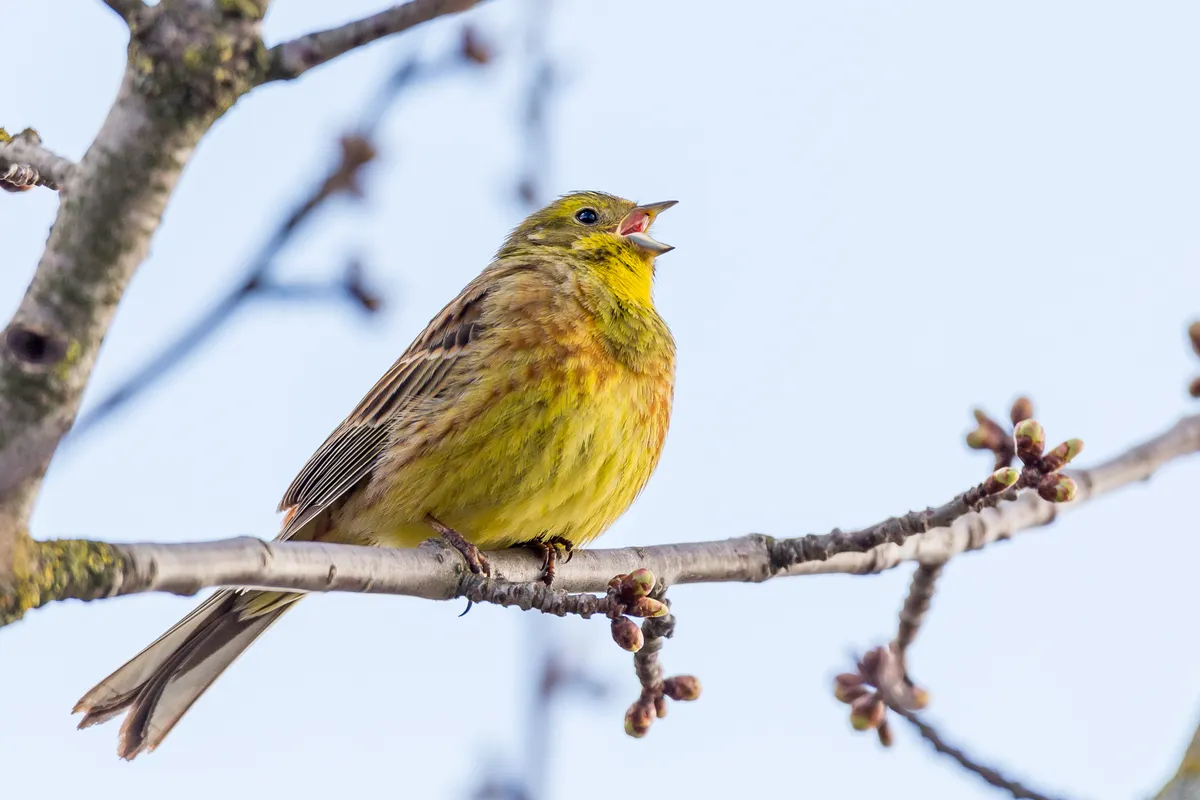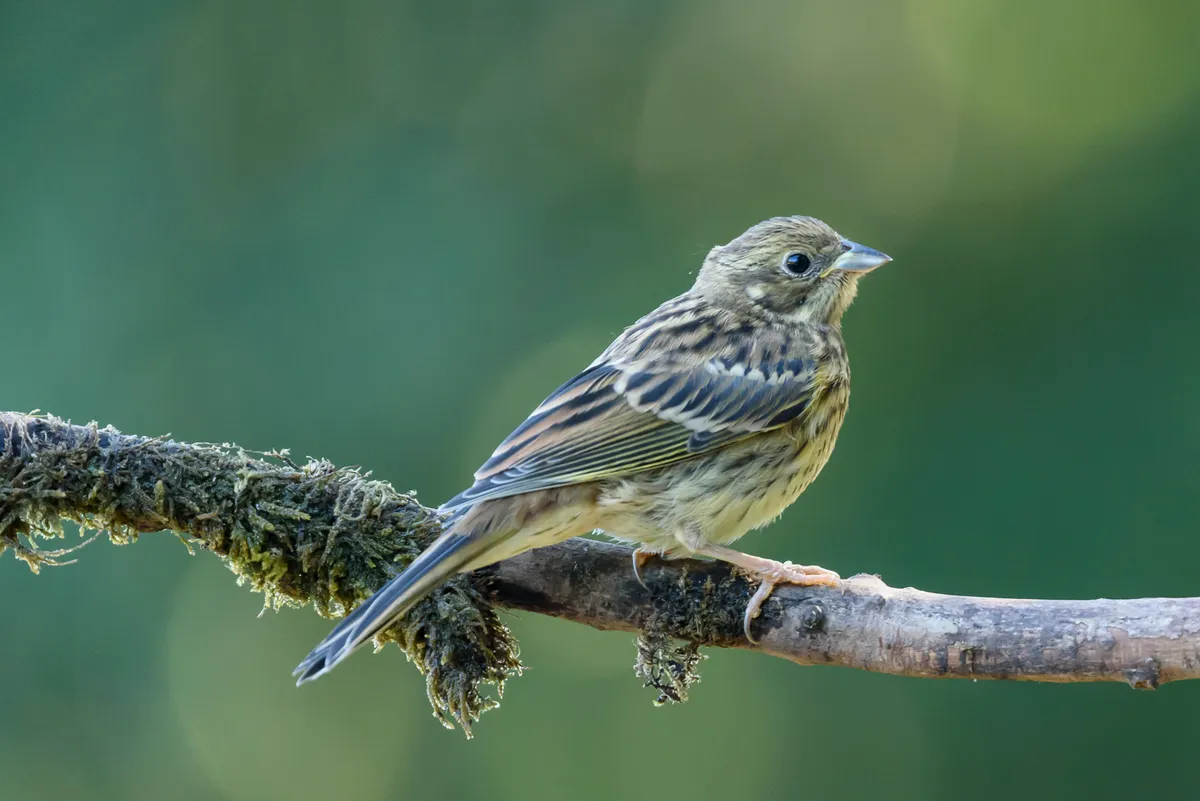There aren’t many buttery-yellow birds in Britain, so the yellowhammer (Emberiza citrinella) is probably our best-known bunting.
The yellowhammer is common all year round, with 680,000 breeding pairs in the UK, though numbers are declining (Red List of Conservation Concern).
In this guide we take a closer look at the yellowhammer, revealing what they look like, their song, when and where to see them, favoured habitat, distribution and breeding.
Interested in learning more about Britain’s songbirds? Check out our guides to blackcaps, reed warblers and willow warblers.
Buntings guide
Buntings are a group of seed-eating birds that bear many of the same characteristics as finches. Learn all about these special songbirds, including six species to look out for in Britain, with your expert guide to buntings.

Yellowhammer identification
The yellowhammer is an easy bird to identify. There is always some yellow on the plumage, especially around the head, and although the males are the brightest coloured, females also look yellow, albeit streakier.
Look out too for an unusual feature, a chestnut rump (the back above the tail). The tail is quite long and has white outer feathers, like many small birds.

Yellowhammer song
The males adorn the tops of hedgerows throughout the country, singing a famous ditty that is usually rendered “a little bit of bread and no cheeeese.” The “cheese” section, which is sometimes missed out, sounds rather like the bird is breathing out heavily.
It is one of the sounds of summer, and on a long day in July may be repeated no less than 7000 times; even in August 3482 phrases have been counted!
Credit: Wildlife World
Yellowhammer breeding
The yellowhammer has a later breeding season than many common birds, with a first clutch in late May and a second in July, hence the constant singing.
Perhaps surprisingly, though, and despite what many people think, the yellowhammer is not a summer visitor. After breeding, it gathers in flocks, moults into drabber plumage and becomes much less conspicuous – but is still around throughout the winter.
Warblers guide: discover more British songbirds
Warblers are a group of small, often green-brown birds with varied songs. Learn more about these spring songsters – including the blackcap, chiffchaff and willow warbler – with our guide to warblers of the UK

Yellowhammer nesting and chicks
In the spring, females don’t only judge males on their singing, but also the brightness of their plumage, which varies from bird to bird; the yellow and reddish colouration comes from pigments acquired from eating caterpillars. Once paired up, the female builds a cup nest well concealed and low down in thick vegetation. From there, everything proceeds in a hurry.
After a fairly standard incubation period (14 days), the young usually leave the vulnerable nest before they are able to fly. They are fed by the adults for a couple more weeks and are then completely on their own.

